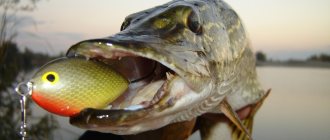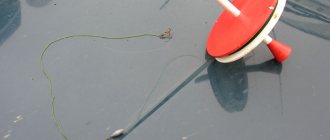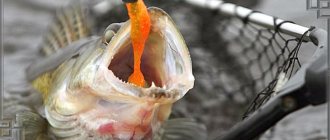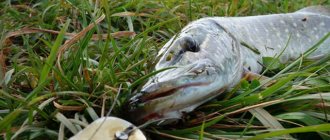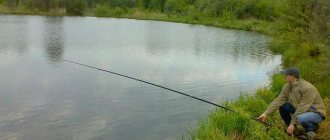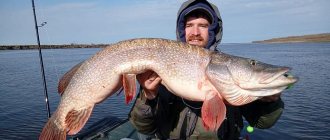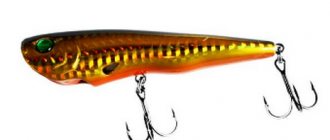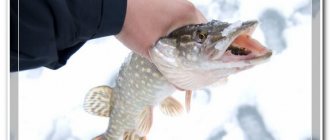Pike fishing in vast shallow waters is of great interest. She is passionate and brings a lot of impressions. In shallow water, the fry find a lot of food - insects, their larvae and algae. The pike follows them, preferring to stay close to their potential prey. And there can be a lot of fish in shallow water, especially overgrown water. Mostly found here small pike, but she can peck very actively.
Choosing the time to catch
In shallow water , pike can be found at any time of the year in open water. The best time for such fishing is spring, summer and early autumn .
In spring , in shallow waters, the water is well warmed up by the sun, and both the small fish that pike prey on and the predator itself rush here. In addition, in the spring, pike enter areas with shallow depths to spawn. At this time, large fish can be found in shallow water.
In summer, trophy specimens stay at depth . But in shallow waters from June to August, small pike readily feed, which can be caught here very successfully.
Autumn is the time when all the fish move away from the shores , to deep areas.
Pike can often be found in shallow waters in early autumn. The closer winter gets, the more it moves deeper.
Some observations
It has long been known that most grassy bays and shallow water overgrown with reeds are almost always densely populated by colonies of the ever-hungry, and therefore always active, pike - the grass pike.
It is also known that very respectable specimens periodically enter shallow spawning bays (each grassy bay can be considered a potential pike spawning ground), but this phenomenon is temporary, or rather, seasonal in nature. Everyone understands that the closer spawning is, the more often large specimens begin to appear in the coastal zone. And, nevertheless, at the beginning and middle of winter, experienced garrisons usually avoid such fishing spots, because It is extremely rare to catch anything serious there. Moreover, until recently, persistently fishing in the listed places among experienced garrison fishermen was considered an unpromising and undignified activity.
Therefore, in the coastal zone, novice fishermen usually gained experience, having poorly studied the reservoir, for whom active biting of small squints was the ultimate dream. While experienced garrison fishermen knew very well that in the middle of winter it was necessary to hunt for large pike on deep edges, long snags, at the exits of bays, that is, in places, as a rule, remote from the coast (the exceptions are the Verkhneruzskoye and Vazuzskoye reservoirs).
And only 3-4 years ago, many realized that the situation on most reservoirs had changed radically. A typical example is the lakes and reservoirs of the Ryazan, Tver and Moscow regions. In most reservoirs, the coastal zone has become a favorite fishing spot for giraffes; large pike can be successfully caught from the ice where, until recently, small perch and live-bait roach were methodically “strangled.”
From the generalized fishing experience of recent years, it becomes clear that a situation has arisen in which the pike, for one reason known to itself, entered the shallow water zone and remained there forever. Therefore, fishing for pike in the coastal zone can be considered not as an exception to the rule, but as a normal situation (winter - summer).
One thing can be said about the specifics of fishing in the shallow bays of a number of reservoirs near Moscow: sometimes it seems that certain individuals, having staked out promising places at the beginning of winter, apparently do not part with them until the ice begins to melt. Off the coast of civilized bays, periodically replacing each other, entire teams of garrison fish catch pike using the “square nesting method.” Nevertheless, there is enough pike in the coastal zone for everyone, and with the proper technical equipment and creative approach, even those who spend a significant part of their lives among the pike will envy your catch.
Large (non-sedentary) pike begin to enter the bays after freeze-up, moving along a certain route that runs parallel to the shore. The predator, as a rule, enters large spawning bays moving clockwise. If we consider the migration of pike into the bay from the high water side, then its greatest concentration will be observed on the right side of the bay.
Therefore, the best places to install vents are always on the line of the coastal bend (entrance to the bay) and along the coastal edge (usually no more than 30–50 m). It is in this area that pike actively feed. However, when passing along the coastline, the pike avoids some places. Then the predator goes deeper into the bay or turns around and leaves the bay.
But not everything is so simple: the movement (stroke) of the pike often stops for an indefinite period for no apparent reason. In the event of a sudden change in weather conditions or a large discharge of water, predatory fish can completely leave the bay until spawning. Therefore, anyone who believes that he is guaranteed a catch in the middle of winter or during the last ice is greatly mistaken.
Selecting a location
You need to look for pike in shallow water at points where it is convenient for it to ambush itself . It can be:
- borders of grass thickets;
- separate small islands of grass among clear water;
- windows and paths of open water among thickets of grass;
- snags lying in the water, trees fallen into the water;
- unevenness of the bottom relief - pits and edges.
Attention. Sometimes pike in shallow water can be successfully caught just 1-2 meters from the water's edge. If the depth immediately below the shore exceeds 20-30 centimeters, a medium-sized pike can set up an ambush here, pressing against the bottom or against tree roots protruding from it.
Lure
To catch large fish, look for a place where the fish feeds. There are spikes in this area. The depth is shallow, so when feeding, the fish even jump out of the water. Feeder gear is thrown into these places. Before starting fishing, make a starting bait. Bait for shallow water should be crumbly and break on the water. If fishing is for carp, then the bait is prepared according to the following recipes: Breadcrumbs; bait mixture base Hemp cake Sunflower cake Ground peanuts Flavorings

You need to prepare the bait carefully so as not to over-moisten it. You need to have a supply of crackers, this will make it drier. The color of the bait should not stand out on the bottom. The fish may be frightened by a bright spot on the bottom.
Lures
There are quite a few options for lures for catching pike in shallow water, from which you can choose the most suitable for certain conditions. The choice also greatly depends on personal preference, as each fisherman has his own favorite types of bait.
. Ordinary spinners and spoons are excellent for catching pike in clear shallow water and for guiding along the reed wall. It is not easy, but possible, to find light, thin oscillating spinners with a sheet thickness of about 0.5 mm with a standard body length of 6-10 cm. These are the models that are best suited for fishing in shallow waters. It is worth paying attention to handmade spoons and trolling spoons designed for fishing with deepeners. For fishing in the grass, oscillating non-snagging spoons are indispensable, which you can buy in a store or make yourself.
Rotating and oscillating spoons- Jig baits . For fishing in shallow waters, rigs without loading or with minimal loading are suitable. You can use a standard jig rig, Carolina, a href=”https://dlyaribakov.ru/raznovidnosti-ryb/shhuka/tehasskaya-osnastka-na-shhuku.html” title=”Texas rig for pike”>Texas, veki. A jig bait mounted on an offset hook is one of the best options for catching pike in overgrown shallow water.
- Wobblers. Floating wobblers with minimal depth are well suited for shallow water fishing. The specific dive value must be selected for the conditions in which you have to fish - it can be 0-0.3, 0.3-1, or deeper water options. Poppers and walkers are also good for catching pike in shallow water. These wobblers move along the very surface of the water, they are clearly visible to predators and are very effective in catching pike. The best time for fishing with surface wobblers is August and September, but you can also use them in the first half of summer.
- Spinnerbaits are an excellent choice for fishing among grass beds. This bait is well protected from snags on algae, since the single hook with which it is equipped is located inside the wire corner. The bait itself is very narrow and tall; it easily passes between vertical grass stems. Spinnerbaits also fight off snags and other bottom obstacles. Despite the fact that such baits are not very similar to the usual food of pike, they attract the predator well, so they are worth paying attention to.
Determine and catch
In shallow waters, first of all, the opportunities for fishing large areas of the water area expand. Sometimes this is important, because large fish, although they behave more boldly than usual, often stay away from the fisherman’s position. We must not forget that the banks of reservoirs are not similar to each other - some are accessible, while others are accessible due to swamps, abundance of vegetation, etc. - No. These are the shores where fish most often rub (photo 5) . And reaching them with a picker, and even more so with a feeder, making a precise cast of 30 - 40 m into a compact “window” on the opposite side is much easier than with a float rod.
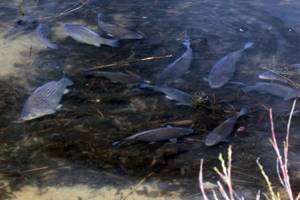
Let me once again mention the cramped fishing conditions in which you periodically have to find yourself. A short, lightweight feeder 2.7 - 3 m long is superior to tall Bolognese and match rods in terms of precise casting from under trees or bushes. Especially in bad weather with strong winds that blow light equipment to the wrong place, and even lead to subsequent breakage. And even in high waves, it is easier to maintain control over a quiver tip during timid bites than over a float.
A similar situation is observed in shallow channels with current. A statically stationary rig that holds the bait at one point is preferable to one moving through the water. Well, as a general rule, when fishing with a bottom, small fish that gravitate towards the shores are still less likely to be caught than with a fishing rod, and the chances of catching a decent specimen increase.
As for truly trophy fish, I didn’t have any personal successes in this regard on shallow fish, which can’t be said about several of my acquaintances. And if you still won’t be able to surprise anyone with bream and crucian carp, then a 15.4 kg carp will arouse respect even among experienced fish. Yes, just such a copy is listed in the assets of one of my friends. Imagine, the main line is 0.2 mm, the leader line is 0.16 mm. On the hook is a bunch of maggots with bloodworms.
The fishing distance is 30 m, the depth is about 1 m. From early morning he was catching bream, and at about 9 o’clock the carp pecked. The bite looked like a powerful pull. At first the fish moved quite obediently, without giving away its size and potential strength. Only at the very shore did it turn around and rush towards the center of the lake. In the end, we managed to pull it out with the help of a neighbor who arrived in time with a landing net.
Top 10 wobblers for pike in shallow water
Megabass Vision
An excellent search bait with which you can quickly find pike in any water area. For fishing in shallow water, the 95 mm long version, which weighs 11 g, is well suited. Megabass Vision catches pike on any type of fishing.
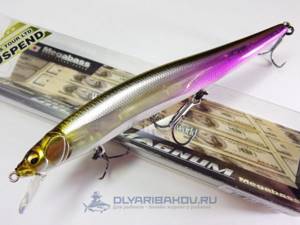
Jackall Tiny Magallon
A very catchy two-piece wobbler that also flies far. The best wiring option is slow, with smooth jerks and pulls. When fishing with Tiny Magallon, it is better to avoid sudden movements of the spinning rod.
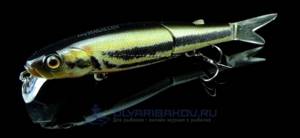
Zip Baits Orbit
In size 110 mm it perfectly attracts medium and small pike . Although small laces also peck at it. The wobbler performs well on any variation of jerking movements. Thanks to the magnetic long-distance casting system, the Zip Baits Orbit flies very far and accurately.

Yo-Zuri Hardcore
This wobbler has an expressive game of its own , so when fishing with it, a uniform retrieve is sufficient. It also works well on any twitching options. The best wiring option is short jerks, during which the wobbler turns almost 180 degrees. Yo-Zuri Hardcore has a long casting system.
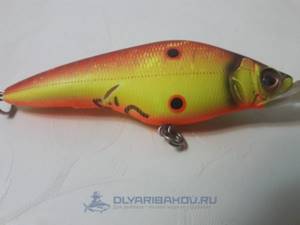
Yo-Zuri 3D Flat Crank
Another one of the legends of the Yo-Zuri company. Crank, which is well suited for fishing at a depth of 1.5-2 m .
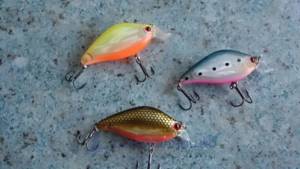
Yo-Zuri Dino Crank
In the SD version, this bait has proven itself well when fishing at depths of up to 2.5 m . The best wiring option is slow, with short pauses.

Lucky Craft Pointer
This wobbler is not equipped with a long-distance casting system, but it flies quite far due to its decent weight. The Lucky Craft Pointer 100 SSR version moves during the retrieve 10-15 cm below the surface of the water. The best wiring option is wide and smooth jerks with a spinning rod with an amplitude of about half a meter.
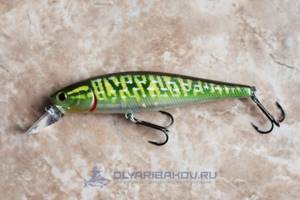
Jackall Squad Minnow
Minnow with a rather tall and voluminous body. great on any type of jerking retrieve - from smooth short twitches to hard jerking.
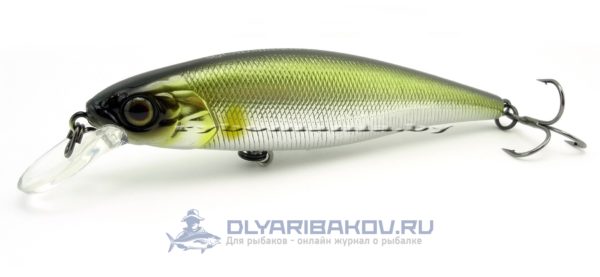
DaiwaTD Minnow
A classic minnow from a renowned company. well on any wiring.
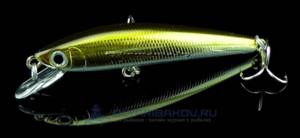
Lucky Craft Bevy Popper
very catchy little popper . With a length of 50 mm, the bait attracts pike of any size. You can also expect a large number of perch in the bycatch.
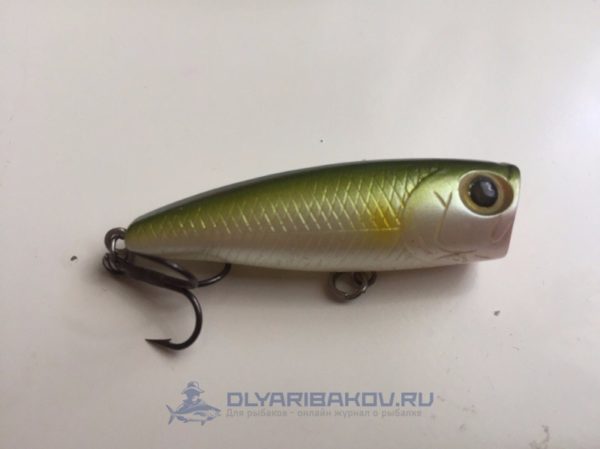
Megabass Giant Dog-X
A large and fairly heavy walker that flies far when casting. On a jerk retrieve, it actively yaws from side to side, as befits a bait of this class.
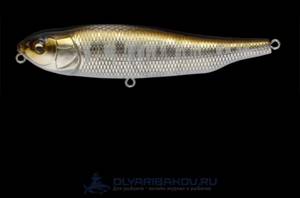
Wiring options
To catch pike, you should use slow retrieves , which this predator prefers. If at depth, as a rule, it is necessary for the bait to move near the bottom, then in shallow water, good results are achieved by fishing in different horizons - bottom, middle and surface.
For such fishing, you can use the following animation techniques:
- Even Retrieving : Suitable for spinning and oscillating spoons, jigs, wobblers and spinnerbaits.
- Wave-like wiring - this animation can be used when catching pike in shallow water with spinners and spoons, jig baits and spinnerbaits.
- Stepped retrieve - when fishing with rotating and oscillating spoons, jig baits and spinnerbaits. You can perform a bottom step-by-step retrieve, allowing the bait to fall during a pause onto the ground, or a step in the water column.
- Jerk wiring - used when fishing for pike in shallow water with jig baits and wobblers.
- Stop-and-go - this animation is used when fishing with wobblers.
- Chaotic wiring - mainly used when fishing with jig baits and wobblers, but is also suitable for spoons and spinnerbaits.
Fishing tactics
Fishing in clear shallow water
In clear shallow water you can navigate by the splashes of the fry . Where he is holding there may be a pike.
If there are isolated islands of grass or snags protruding from the water , such points are definitely worth checking .
Attention. Interesting points can be found by passing the water area on a boat with an echo sounder. But in shallow water this will alert the fish, and as a result, it will not bite for some time. Another option is to tap the bottom with a jig bait to find changes in depth.
You can also find pike in overgrown shallow water using a search wobbler or other bait . This should be a model that attracts predators well on a fast retrieve.
With the help of such bait, you need to quickly explore an unfamiliar water area, identifying the parking areas of the pike, which ambushes near snags and stones lying on the bottom, in pits and other points. Once you have discovered pike sites in a new unfamiliar water area, you can subsequently always catch it at these points.
Fishing in overgrown shallow waters
Having examined the overgrown shallow water , you can immediately determine promising points for casting. These can be the boundaries of grass thickets, windows among the grass and areas next to islands of grass.
This is how fishing in overgrown shallow water differs from fishing in clean water - it happens “by eye” .
The main thing is not only to find promising areas, but also to be able to make an accurate cast and good wiring. To do this, you will need good technique for handling a spinning rod , which can be trained when fishing for pike in overgrown shallow water.
Fishing rod
To catch chub, it is recommended to use a Bolognese fishing rod with a length of 500 to 1000 centimeters, the test weight of which will not exceed 16-18 kg. The fishing rod must be dynamic, have a fast action, which will allow you to control the bait with great precision during its rafting. The reel should be used simple, float, on the spool of which at least one hundred meters of fishing line with a thickness of 0.18-0.20 millimeters should be placed. The hook is selected according to the bait used; a hook with a short shank and a wide bend is best. The chub is a strong fish; it grabs the bait sharply, so using a weak hook is not advisable; it can bend already at the moment of hooking.
Read: Effective fishing. We catch ide and chub using a bale
